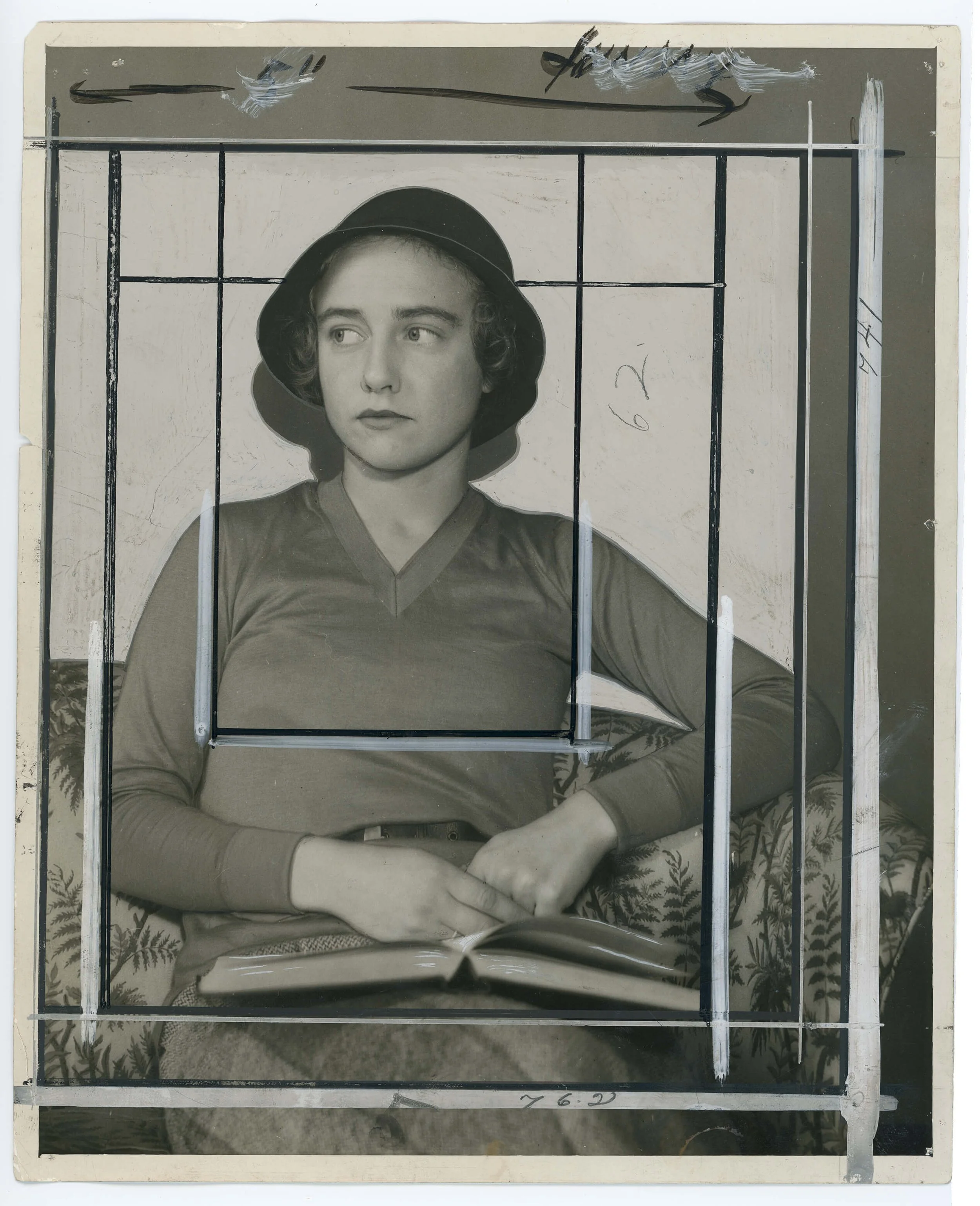Sara Knelman
On view: Unit 8
Sara Knelman. Lady Readers
LADY READERS
Lady Readers, a collection of photographs of women reading, has accumulated slowly over the last decade. The found photographs in it are drawn mainly from flea markets and websites like eBay, places of refuge for the contents of abandoned albums and defunct press archives. To date, it includes more than 300 photographs, made from every era of the history of photography, from early stereoscopes, ambrotypes and cartes postales, to modernist graphic magazines, anonymous snapshots, Polaroids, and press prints. The vast majority of them are from the middle of the twentieth century, when the volume of commercially produced photographs—including personal records of life and formally produced press prints—was expanding exponentially.
This exhibition, co-curated with Daniel Alexander for Peckham24, features seven press prints, accompanied by a video showing a selection of smaller, anonymous images from the larger archive. Knelman knows very little about the figures in, or contexts around, most of these photographs, and part of her fascination comes from contemplating the possible lives and narratives to which they might be attached. The press prints often come with stamps and notes inscribed on their reverse that leave clues about their uses. Many have also been marked with grease pencil, indicating how its user wanted the photograph cropped for printing. In one, a succession of crops move to tighten the frame, like a camera zooming into a close-up shot; in the final crop, the book is no longer a part of the image. A headline, written in pencil on the back, seems out of sync with its depiction: “Miss Hannah S. Taylor will start a dancing class, next week at the Parrish of the Church of the Redeemer.” A more ambiguous stamp offers only one word, “Story”, and a blank space left for someone else to fill in—the possibility, as was often the case, that the photograph might be reused to illustrate other stories or ideas.
Though Knelman has gathered the collection together, she doesn’t assume ownership of the images; they have been let loose in the world, unbound from the conditions of their production, and from the people and places that made them. For Knelman, collecting is a way of bringing an attentiveness to this narrow photographic theme, and in turn to the symbolic power it might hold. The collection invites us to speculate on the interior worlds of many generations of reading women, and the liberatory space that reading a book affords.
A catalogue has been published to accompany the work, available from Ottoby Press at A Bigger Book Fair.

